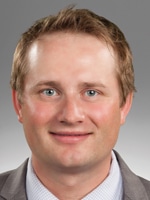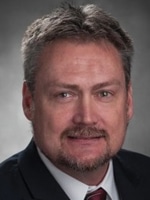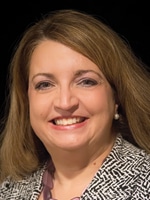July 2022—A time of tough choices. A complex dance. This is how Compass Group members on a call with their colleagues, led by CAP TODAY publisher Bob McGonnagle, describe what it’s like to cover outpatient centers amid severe staff shortages.
“We are consuming significant resources to get all our locations staffed,” one member says. Another predicts: “We will not be out of this staffing situation for 10 years.”
Here is more of what they and others talked about on June 7 as COVID positivity rates were up and monkeypox was in the news.
The Compass Group is an organization of not-for-profit IDN system laboratory leaders who collaborate to identify and share best practices and strategies.
Lauren Anthony, what is the staffing situation now in Minneapolis?
Lauren Anthony, MD, system laboratory medical director, Allina Health, Minneapolis: We are having staffing challenges, and I would be interested to know how people are managing clinician expectations and staffing shortages, especially in the ambulatory sphere, where we’re feeling the crunch. I’m trying to navigate that, maybe move to a different model for supporting our clinics. Offering complex test menus or moderate-complexity testing is less sustainable now. We have a lot of resources out there, and it’s a high-maintenance model that has become unstable because we have resignations every day.

Ingemansen
Dan Ingemansen, you have a vast network of ambulatory medical care at Sanford. How are you coping with staff shortages and complex testing when you may not have all the people you’d like to have on site?
Daniel Ingemansen, senior director, Sanford Health, Sioux Falls, SD: We still have quite a few levers we can pull to alleviate some of the concerns. Our ambulatory centers still have a deep menu of on-site testing. One action we took was pointing outside orders to specific patient service centers with dedicated phlebotomists. This has allowed our acute care centers to focus on Sanford patients.
We continue to assess the level of service we can provide considering our staffing shortages. Equally concerning are the general employee shortages. Serving as a reference lab to providers across the Midwest, we have many nonclinical employees specifically in our customer service and revenue cycle departments. For these positions we’re competing not necessarily with local hospitals but every local business.
It is a time of tough choices.
Stan Schofield, current events continue to ruin systemwide budgets—labor shortages, increased expenses, inflation. Give us a little commentary on what you’ve heard so far and particularly how it affects system budgets.
Stan Schofield, president, NorDx, and senior VP, MaineHealth: At a high level in the economics of health care, if you treated a lot of COVID patients, you lost money. Hospitals and systems make money on joint replacements, high-cost procedures, imaging, and cancer medicine. They need that; government and insurance payments do not cover all typical expenses. At the same time, we’ve had a massive increase in contract labor costs. They are out of control. People were paying nurses in some cases $200 an hour so they could keep the doors open, or at least the lights on, because they had no other staffing—their nurses left to become travel nurses for the money. Some of that has resolved and improved but it’s not over.
Every day I see headlines and get market intelligence—this health care system lost $1 billion in the first quarter, another one $870 million. It is clear to me that many health care systems are at an inflection point financially, and they are not going to be able to close this gap caused by contract labor. You cannot catch up with enough heart surgeries and joint replacements to make up a billion-dollar loss.
Having said that, many places have endowments and investment funds. Well, the stock market has crushed that too, and then you add inflationary components, the price of fuel, and the cost and availability of housing.
Laboratories are going to be challenged to remain a strategic asset. Hospitals are in trouble; they’re bricks and mortar. The lab will always be a secondary consideration for patient direct care within the hospital or health system, and health systems are hospital-centric, not laboratory-centric.
My prediction is we will not be out of this staffing situation for 10 years. People said two million, three million people left the workforce. I want to know where 40 million went. You’re paying people up to $30 an hour for phlebotomy and you still can’t get them.
We’re going to have to be creative. We have been using lower educated, experienced people to be equipment operators, device operators. We’re still running schools and training phlebotomists but we can’t get people to apply to the classrooms and be paid $20 an hour with benefits to be trained to be a phlebotomist. We can’t use the tools we’ve used in the past. We’re going to have to come up with different strategies or different locations.
Contract labor costs are going to be a massive disruptor to lab operations. I’m not talking about lab contract labor; I’m talking about all the contract labor the hospitals are paying for, and the lab’s going to see the consequences of that.

Carbonneau
Eric Carbonneau, are you seeing the staffing problems, inflation, et cetera?
Eric Carbonneau, MS, MT(ASCP), chief operating officer, TriCore Reference Laboratories, Albuquerque: Yes. We have multiple phlebotomy programs in the state and the city, and TriCore recently started its own. We’re trying to attract even more candidates. The major employers outside the health care industry are competitive with wages. We’ve done market adjustments in some cases to the tune of 20 percent increases to staff in order to attract folks. We’re looking at benefit changes, more education, tuition stipends, those sorts of things.
We’ve had to close or consolidate some of our outpatient centers, depending on staffing needs. A major project for us this summer is how we can become more efficient with our patient care centers so people have access in the community but still meet our staffing needs and customers’ expectations.
Mick Runnoe from ACL, would you like to comment?
Mick Runnoe, VP of Laboratory Operations, ACL Laboratories, West Allis, Wis.: Our agency staffing within the laboratory to accommodate vacancies is almost becoming unsustainable. I brought my leaders together and said we have to see significant reductions in our agency staffing. The prices are ridiculous.

Runnoe
We have many moderately complex laboratories in our ambulatory settings, especially in the Wisconsin region, and on any day I get reports that one or more of our collection centers had to close because we haven’t had staff to fill those. A lot of it is due to existing vacancies and then compounded by COVID vacancies. We’ve had about 25 percent positivity rate in our community and 10 percent in the organization as a whole.
It’s becoming difficult when you have a site that has one med tech and two phlebotomists to know whether one will show up. So we’ve had to make difficult decisions. It’s fortunate we have good relationships with the clinical staff at ambulatory sites, and they’re understanding and are dealing with the same issues we are.
We’ve seen an uptick in our stat courier services, because when we close a lab those physicians expect the same service level. Then you send the stat courier and pay for the additional fuel charges. It’s becoming, as was said, a bit unsustainable and difficult to manage. Where are we going to be if we can’t turn the table, especially with staffing vacancies?
If you’re having to close collection centers, patient service centers, doesn’t that create an inevitable downward spiral for a system?
Mick Runnoe (ACL Laboratories): It does. If we close one location, we leave instructions with the staff at that site for where patients can go to get collected at another location. Fortunately in the Wisconsin region, we have quite a few places where patients can get collected, but then it becomes a burden on the other site.
To be more proactive we’ve done away with walk-ins. We’re pushing our clinicians to ask patients to call ahead to schedule or have them schedule when they write the order.

Cloutier
Darlene Cloutier, how bad or good does this discussion make you feel? How are things going at Baystate with COVID?
Darlene Cloutier, MSM, MT(ASCP), HP, director of laboratory operations, Baystate Health, Springfield, Mass.: We peaked a month ago at about 15 percent positivity. We’re down to about five percent now. A month ago is when our staffing challenges spiked, too. A decision was made by the organization to allow staff who had COVID to come back in five days, but many of them could not return because they were not well enough and were still reporting symptoms. So the time away from work extended beyond five days for many.
 CAP TODAY Pathology/Laboratory Medicine/Laboratory Management
CAP TODAY Pathology/Laboratory Medicine/Laboratory Management
